Wish you had more insight into your competitors? Want to see which YouTube audiences they’re targeting and which creatives they’re testing?
In this article, you’ll learn how to use the Google Ads Transparency Center to research the competition and gain a competitive edge.

What Is the Google Ads Transparency Center and Why Does It Matter for Marketers?
Launched in March 2023, the Google Ads Transparency Center is a library of paid content that advertisers are running across Google properties including YouTube. It includes search, display, Gmail, and YouTube ads that either are currently active or have delivered in the last 30 days. The site also displays political ads that have run in the last 7 years.
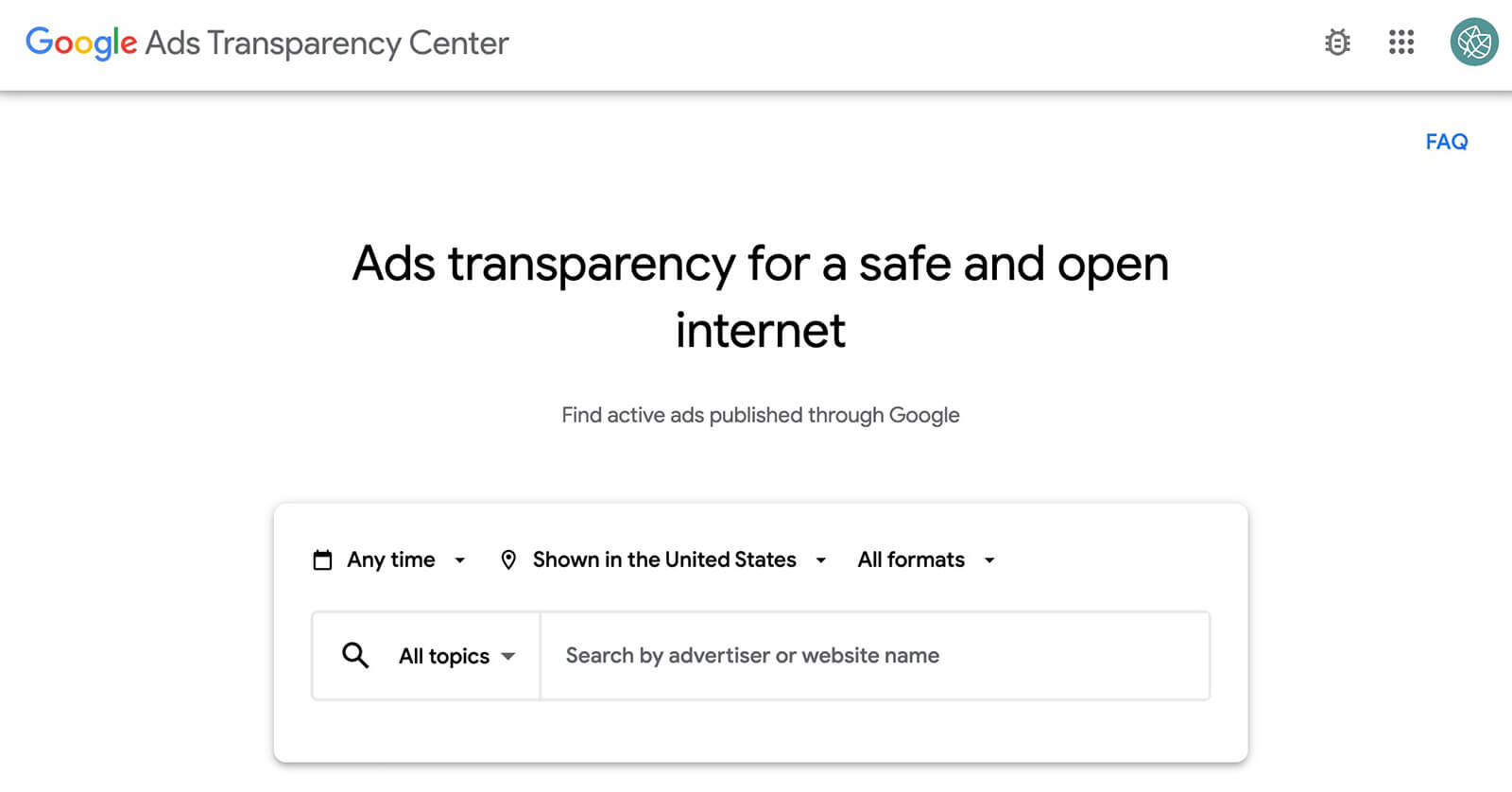
Although the Google Ads Transparency Center primarily aims to give users more control over the ads they see, it’s also a valuable resource for advertisers. Because the site is searchable, advertisers can easily use it for competitive research. In other words, you can use it to look for your competitors and view the YouTube ads they’re running.
With the Google Ads Transparency Center, you can find any verified advertiser and:
- Watch their video ads.
- View their image ads.
- Read their ad copy including headlines and descriptions.
- See the calls to action (CTAs) they’re using.
- Count the number of ads they’re running.
So what can’t the Google Ads Transparency Center do? It doesn’t list unverified advertisers or show paid content from unverified advertisers. That means you can’t use it to search for competitors who haven’t completed Google’s advertiser verification program yet. Google appears to be actively pushing this program so more advertisers should be on board soon.
Does that mean you’re out of luck if none of your competitors are verified yet? If you want to find ads from an unverified advertiser, you may be able to use a workaround. We’ll cover the process below.
Another limitation of the Google Ads Transparency Center is its lack of ad versions. For example, if you search for ads run by Google in the Google Ads Transparency Center, you’ll see about 20,000 ads (pictured below). The ads are sorted chronologically but there’s no way to tell which are test versions of each other and which are independent ads.
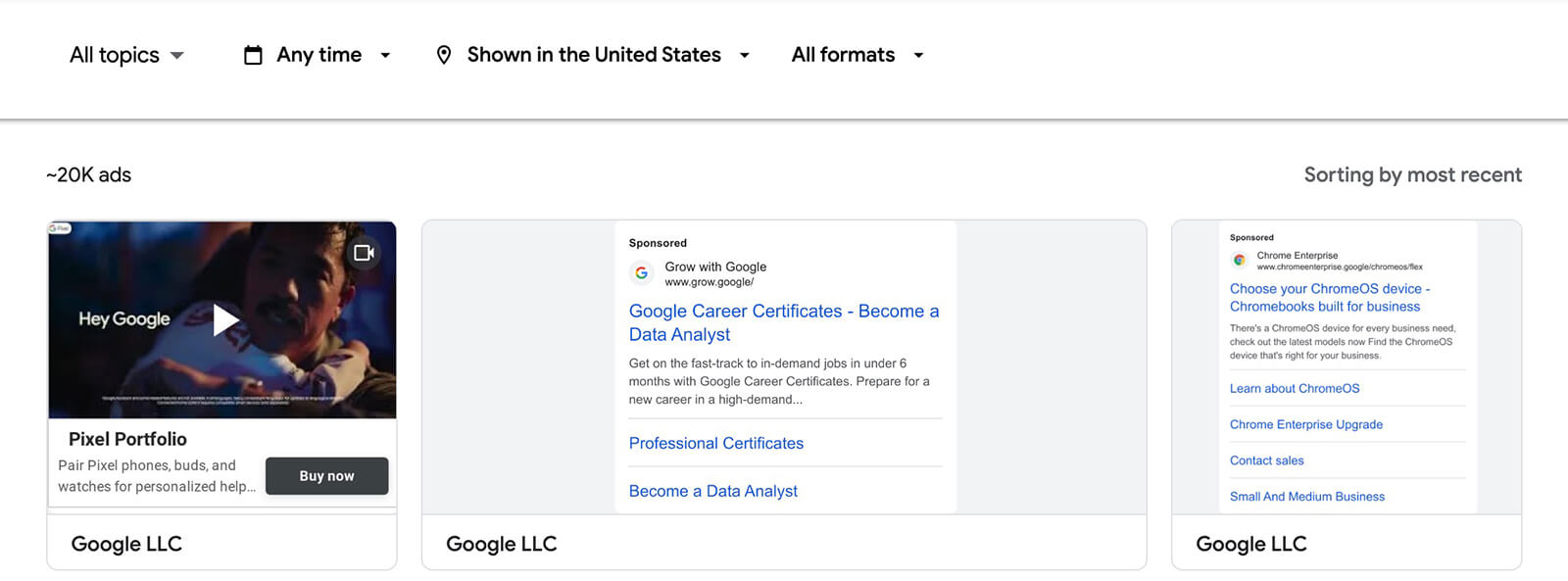
However, if you search for ads run by Google in the Meta Ad Library (pictured below), spotting similar ads is much easier. Meta groups ads together if they repeat elements so you might see a note like “3 ads use this creative and text.” If you click the See Ad Details button, you can scroll through the versions to see how the advertiser is testing elements.
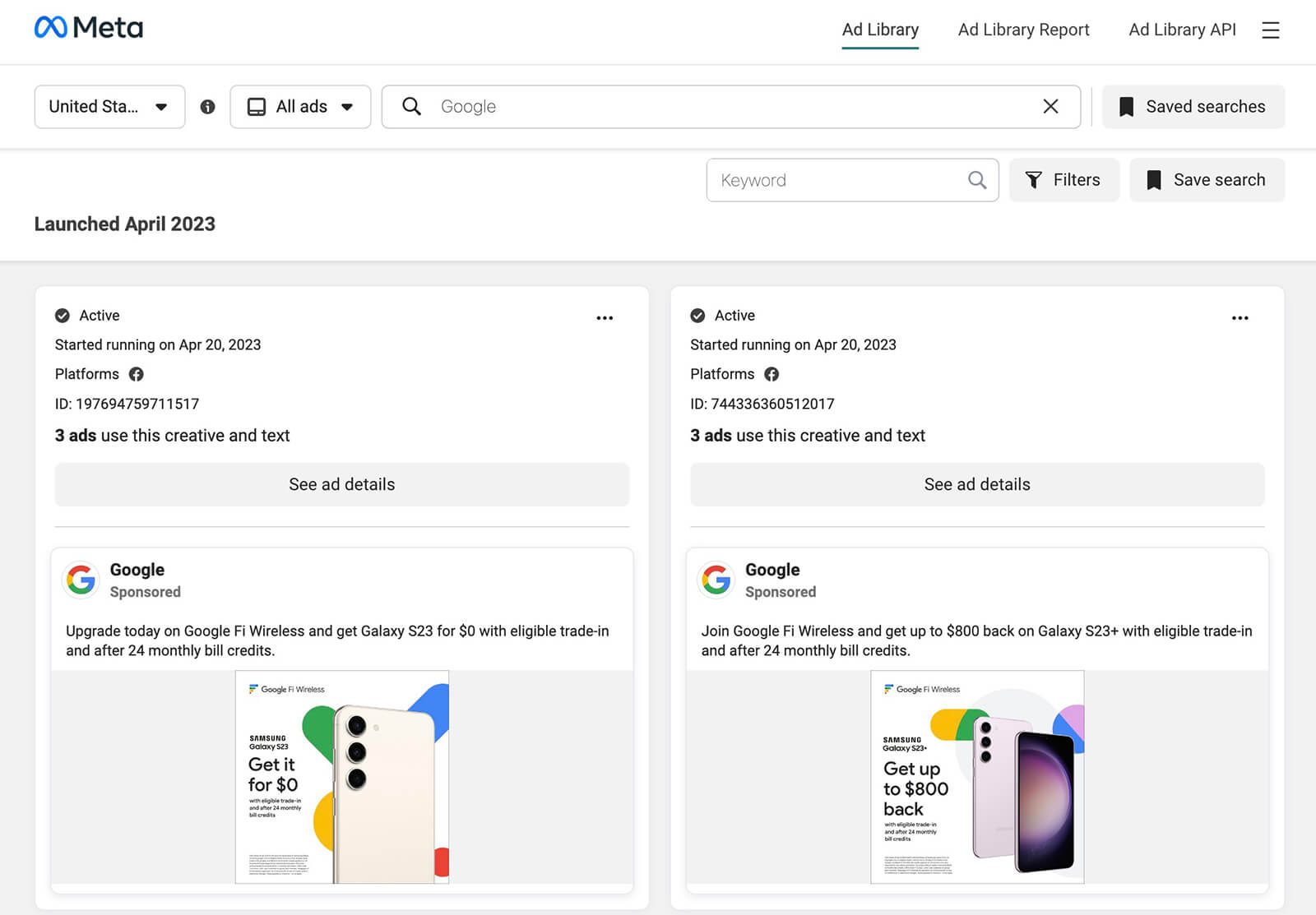
So how helpful is the Google Ads Transparency Center? Using it may require some additional legwork, especially if you’re researching unverified advertisers or competitors with a large ad library. Yet it provides significantly more data than advertisers could access previously (none), and it’s an excellent starting point for competitive research.
How to Use the Google Ads Transparency Center for Competitive Research
Advertisers have two main options for using the Google Ads Transparency Center to research competitors. Let’s walk through the workflows for searching competitors in the database and analyzing ads in the feed.
#1: Search for Competitors in Google Ads Transparency Center
The easiest way to research competitors with this tool is to search for them directly. Start by opening the Google Ads Transparency Center and checking the search settings.
By default, the platform searches for ads in all formats on all topics, that have run during any eligible time frame and that have been shown in your local region.
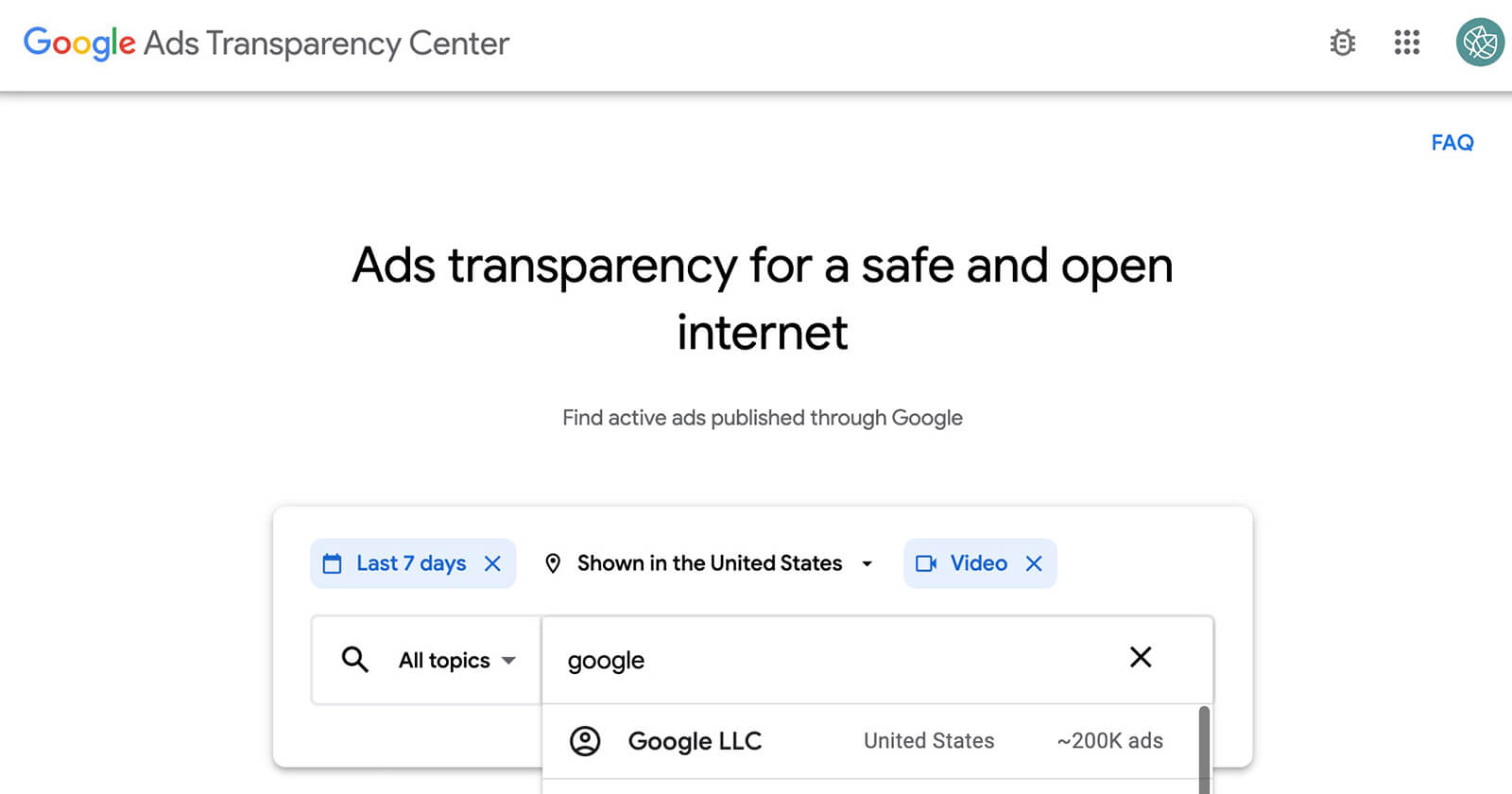
You can use the drop-down options to change any of the settings. For example, you may want to zero in on video ads run during the past week only.
Get World-Class Marketing Training — All Year Long!
Are you facing doubt, uncertainty, or overwhelm? The Social Media Marketing Society can help.
Each month, you’ll receive training from trusted marketing experts, covering everything from AI to organic social marketing. When you join, you’ll also get immediate access to:
- A library of 100+ marketing trainings
- A community of like-minded marketers
- Monthly online community meetups
- Relevant news and trends updates
If the search turns up any results, you can start browsing them instantly. Click on any ad to view it in full, read the copy, and watch any video assets. Here are a few things you can learn from this type of search:
How Many Ads Your Competitors Are Running
Do they have significantly more active ads than your business does? A substantially larger portfolio of ads suggests that competitors are either doing more extensive testing or spending more on ad campaigns. If you identify a large discrepancy, you might consider revisiting your own investment in Google Ads.
Where Your Competitors Are Running Ads
Are your competitors running video ads? If so, there’s a good chance they’re advertising on YouTube. To get a sense of how much they’re relying on YouTube versus other Google properties, compare their video ads portfolio to their text and image ads.
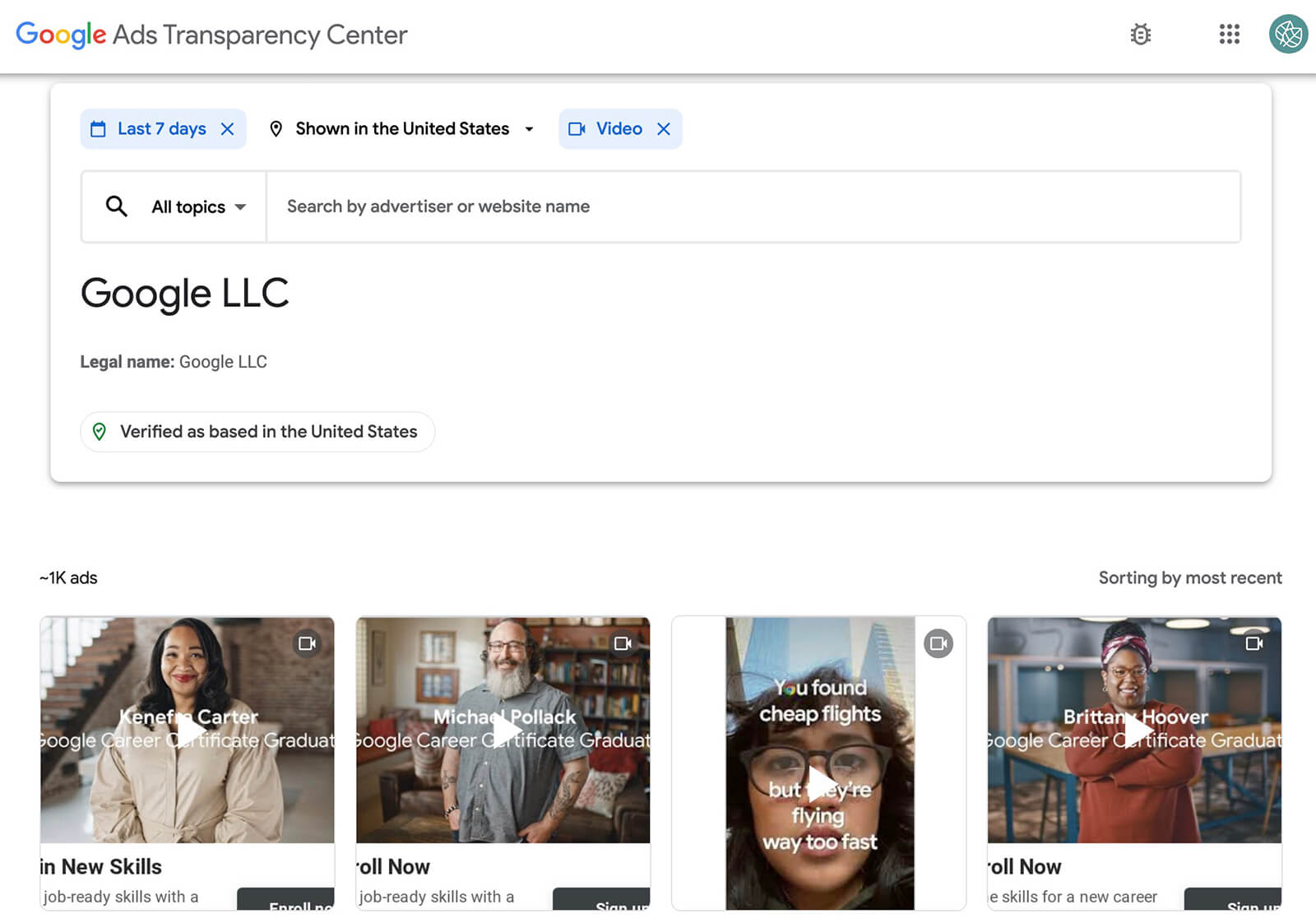
Which Video Formats Your Competitors Are Using
Are most of your competitors’ video ads in landscape format and optimized for viewing on TVs or desktop devices? Or are they in full-screen vertical format and optimized for the Shorts feed? If their video ad format focuses completely on Shorts, for example, you might consider exploring this format.
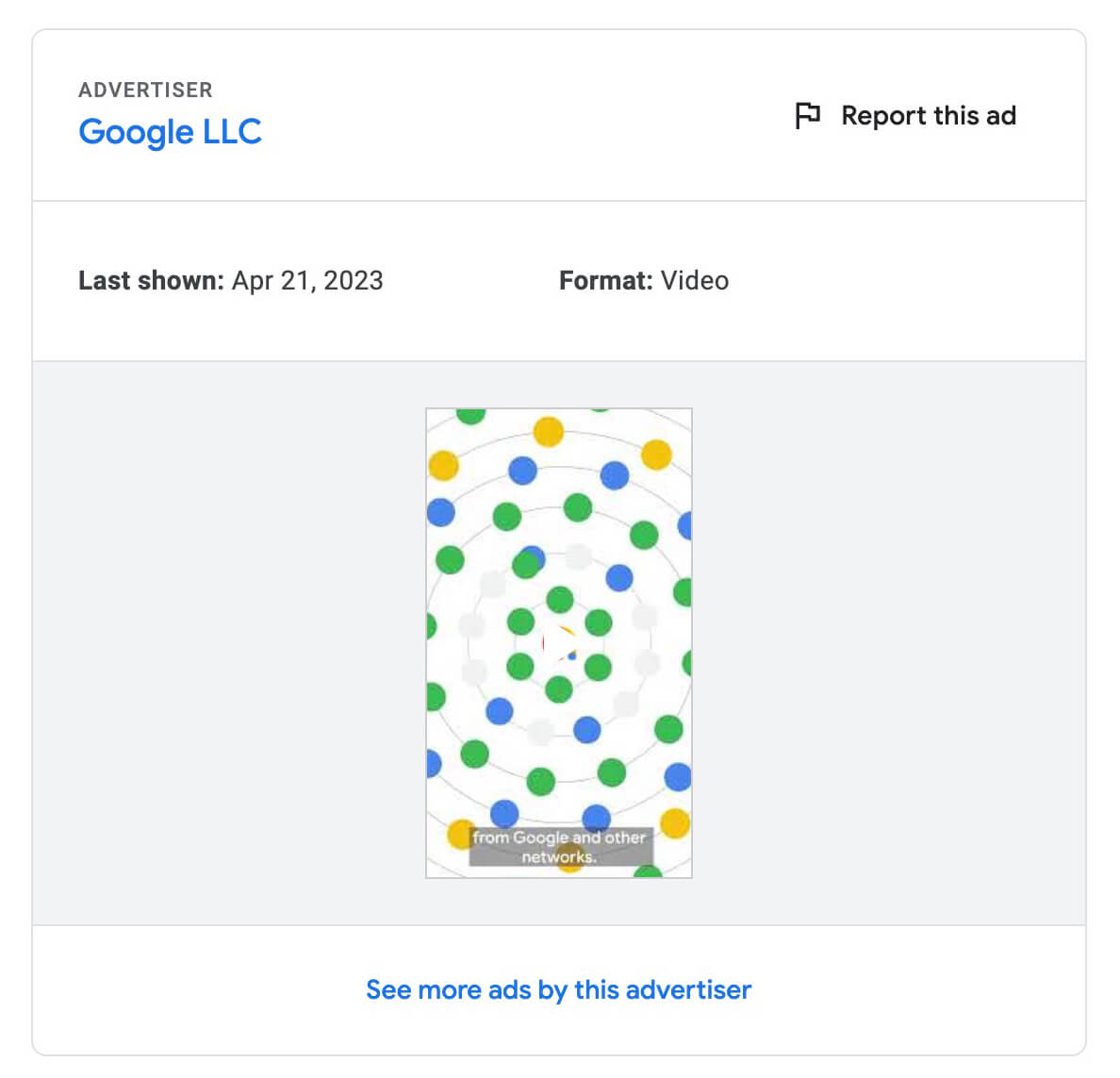
What Kind of Messaging Your Competitors Are Using
You can see your competitors’ public messaging on their websites or in their social media posts. But what kind of messaging are they using in paid content? Are they experimenting with new positioning or testing pain points you haven’t tapped into yet?
What Kind of Offers Your Competitors Are Running
Which tactics does the competition use to get results? Are they using scarcity to create a fear of missing out or launching limited-time offers that require quick action? Or are they using tripwires and loss leaders to attract customers? It’s worth considering how their tactics could work for your business, too.
Which Funnel Stages Your Competitors Are Targeting
The Google Ads Transparency Center doesn’t flag funnel stages for each ad. But you can use signals like CTAs to determine the funnel stage that aligns with each ad. Are your competitors primarily running top-of-funnel or bottom-of-funnel ads? How does that compare to your team’s strategy?
What Styles Your Competitors Are Using for YouTube Ads
Are they filming live-action ads, creating animations, or repurposing user-generated content? Are they using text overlays and custom captions to reiterate messaging? If they’re testing a video style that your team hasn’t tried yet, it may be worth experimenting with.
#2: Analyze Ads on YouTube and Other Google Properties
If you have a list of competitors that are verified advertisers, then using the workflow above is a great way to research their ads across Google properties. But if your competitors don’t yet appear in the Google Ads Transparency Center or if you want to expand your list, you have another option.
With the workflow below, you can research ads that you see on YouTube and across Google properties. This workflow also provides data that you can’t find in the Google Ads Transparency Center so it can give you new angles for improving your ad campaigns.
Research YouTube Ads
Whenever you see an ad on YouTube, you can click the three-dot menu or the Information icon and select the option to learn more about the ad. For example, if you spot an in-stream ad on YouTube, you can click the Information icon below the CTA and then click to open My Ad Center (below).

Discover Proven Marketing Strategies and Tips
Want to go even deeper with your marketing? Check out the Social Media Marketing Podcast! Publishing weekly since 2012, the Social Media Marketing Podcast helps you navigate the constantly changing marketing jungle, with expert interviews from marketing pros.
But don’t let the name fool you. This show is about a lot more than just social media marketing. With over 600 episodes and millions of downloads each year, this show has been a trusted source for marketers for well over a decade.

You’ll see similar options when you spot ads on your YouTube home page (below).
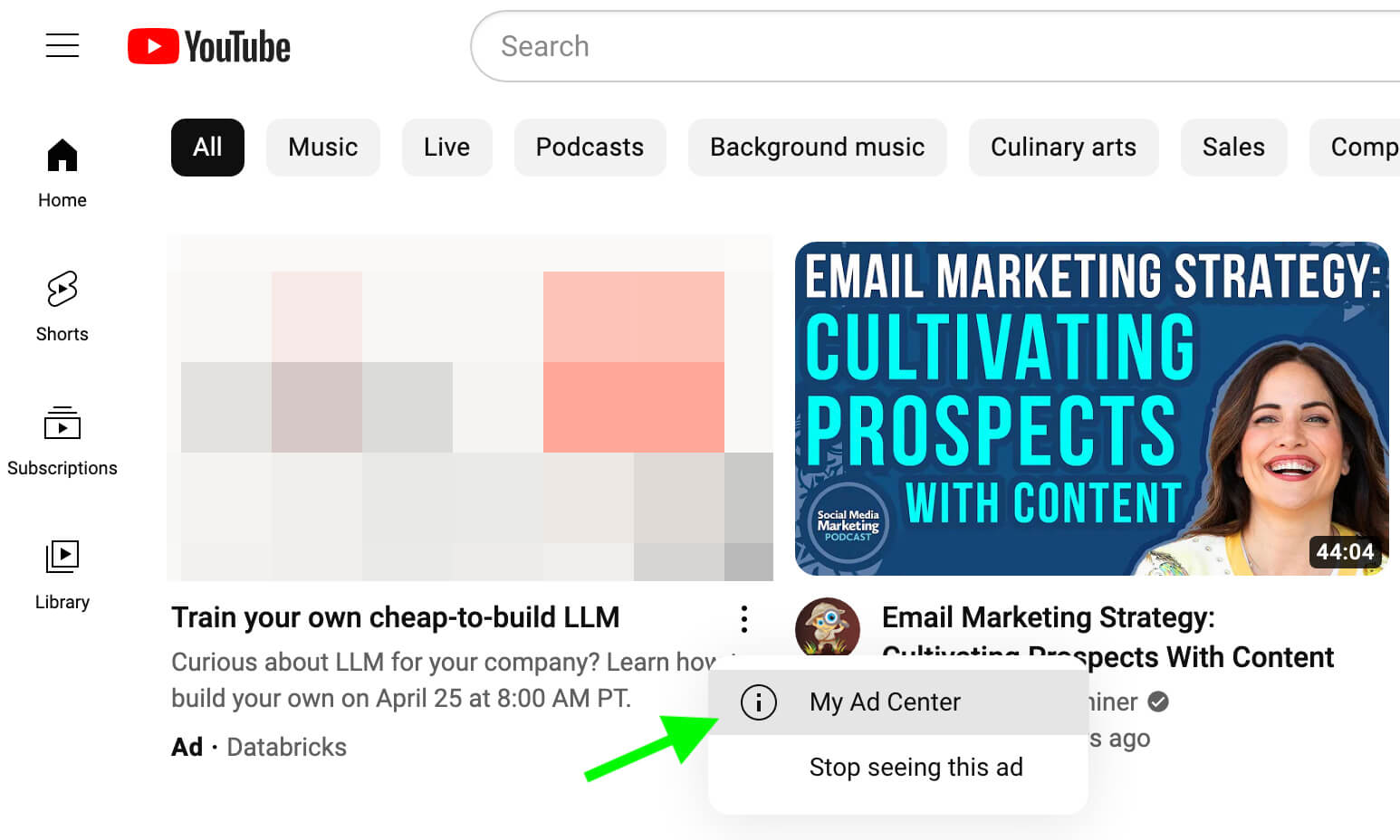
This option is also available for ads in YouTube search results (below left) and in YouTube’s lists of suggested content (below right).
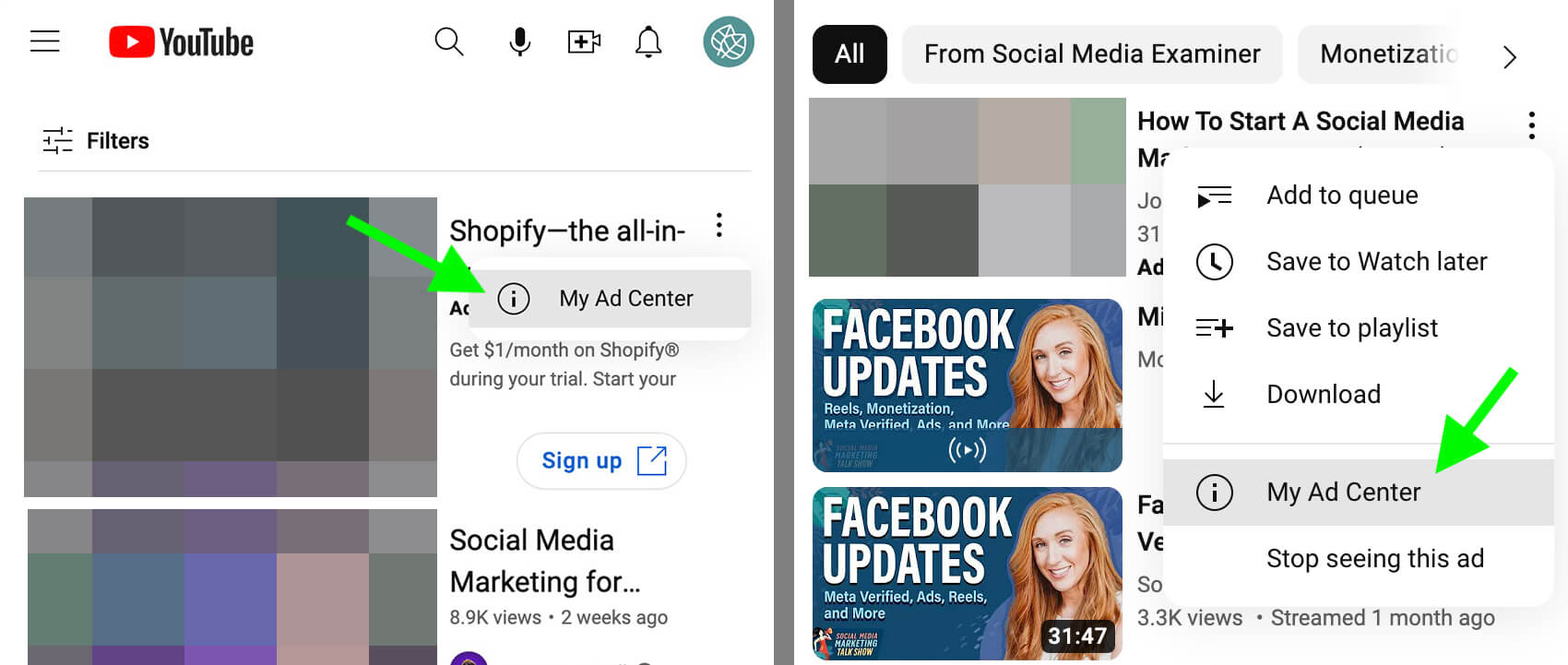
When you click to view My Ad Center, you can review the name of the advertiser, which you can click to explore or search for in the Google Ads Transparency Center. But before you click away, check the targeting data that appears in the My Ad Center pop-up.
In some cases, the targeting data may be somewhat generic. In the example below, Google lists only location and time of day under Why You’re Seeing This Ad. But in other cases, you can see much more detail.
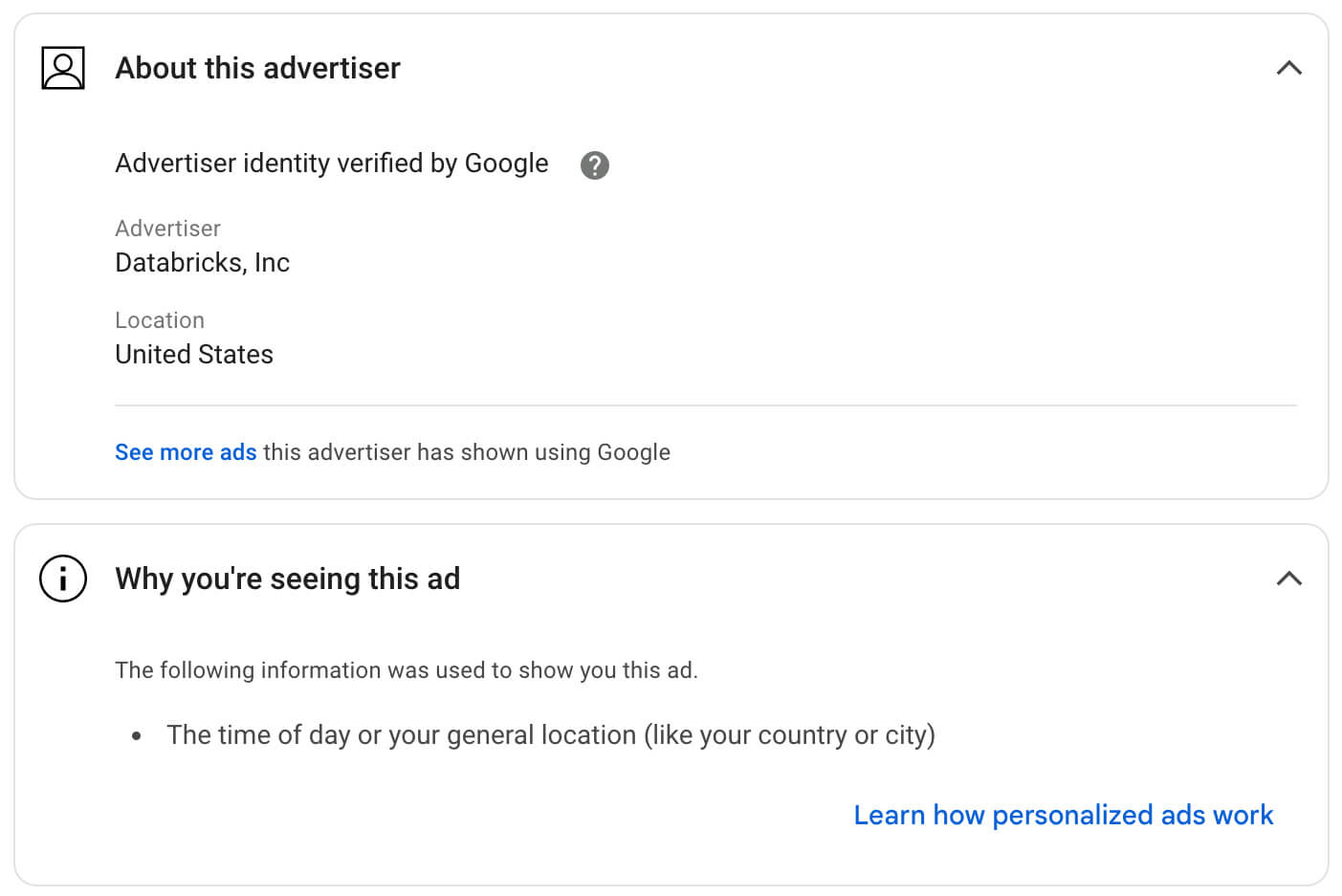
As the example below shows, search terms (among other factors) influenced the ad delivery. If you’re using keywords for targeting, you can use this workflow to analyze ads you might be competing with or refine your list of keywords.
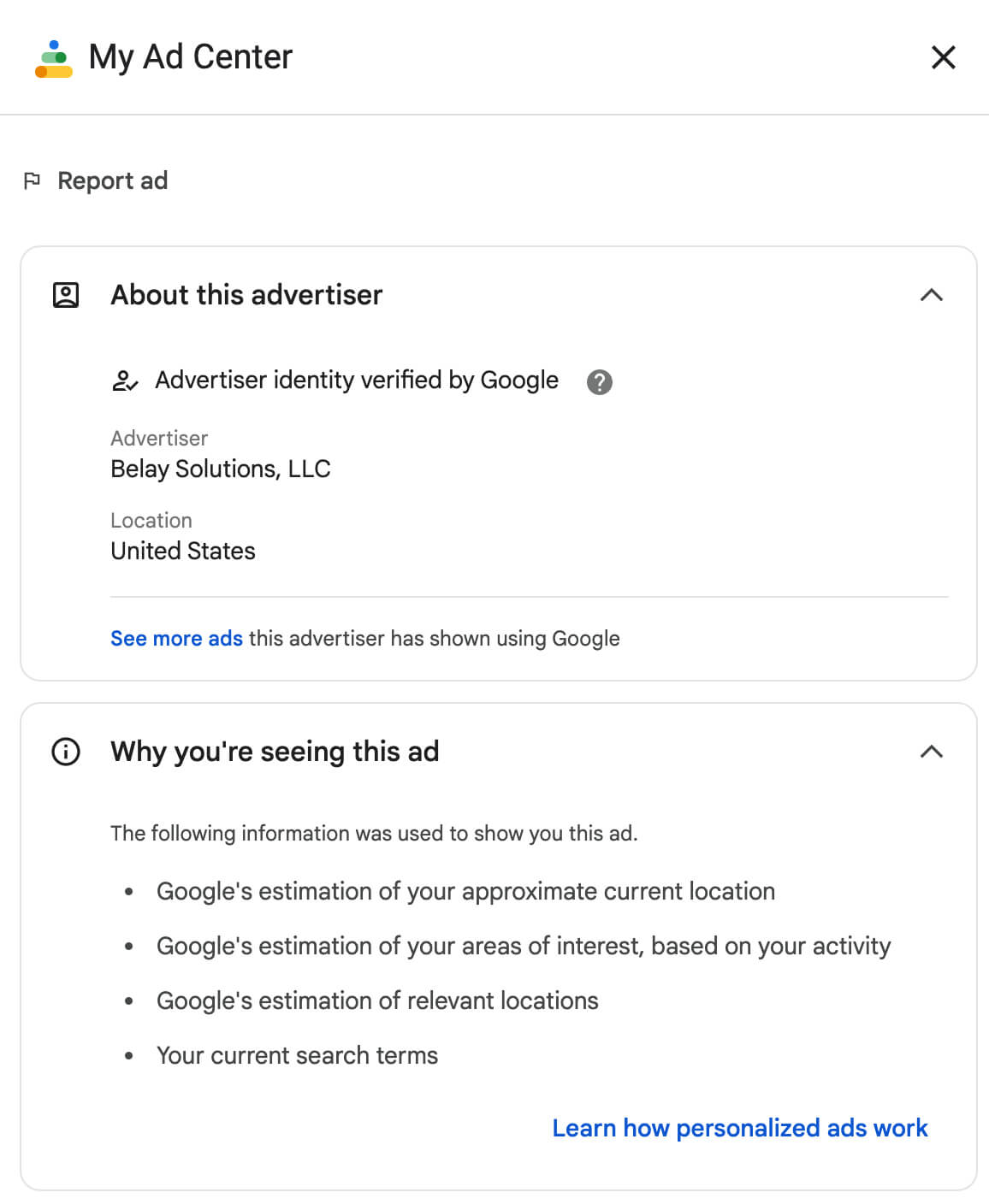
In fact, you can use YouTube search to look for competitors or search for terms related to their products, offers, and audiences. Then if their ads appear, you can click to analyze their targeting. If your competitors don’t appear in the Google Ads Transparency Center, this workflow can help you find their paid content.
Analyzing ads directly can also give you new ideas for targeting. The example below suggests that the advertiser has placed ads on specific videos or certain channels. If you haven’t tested this type of competitive targeting yet, it may be worth trying. Watch some ads on competing videos or channels to see what you’ll be up against.
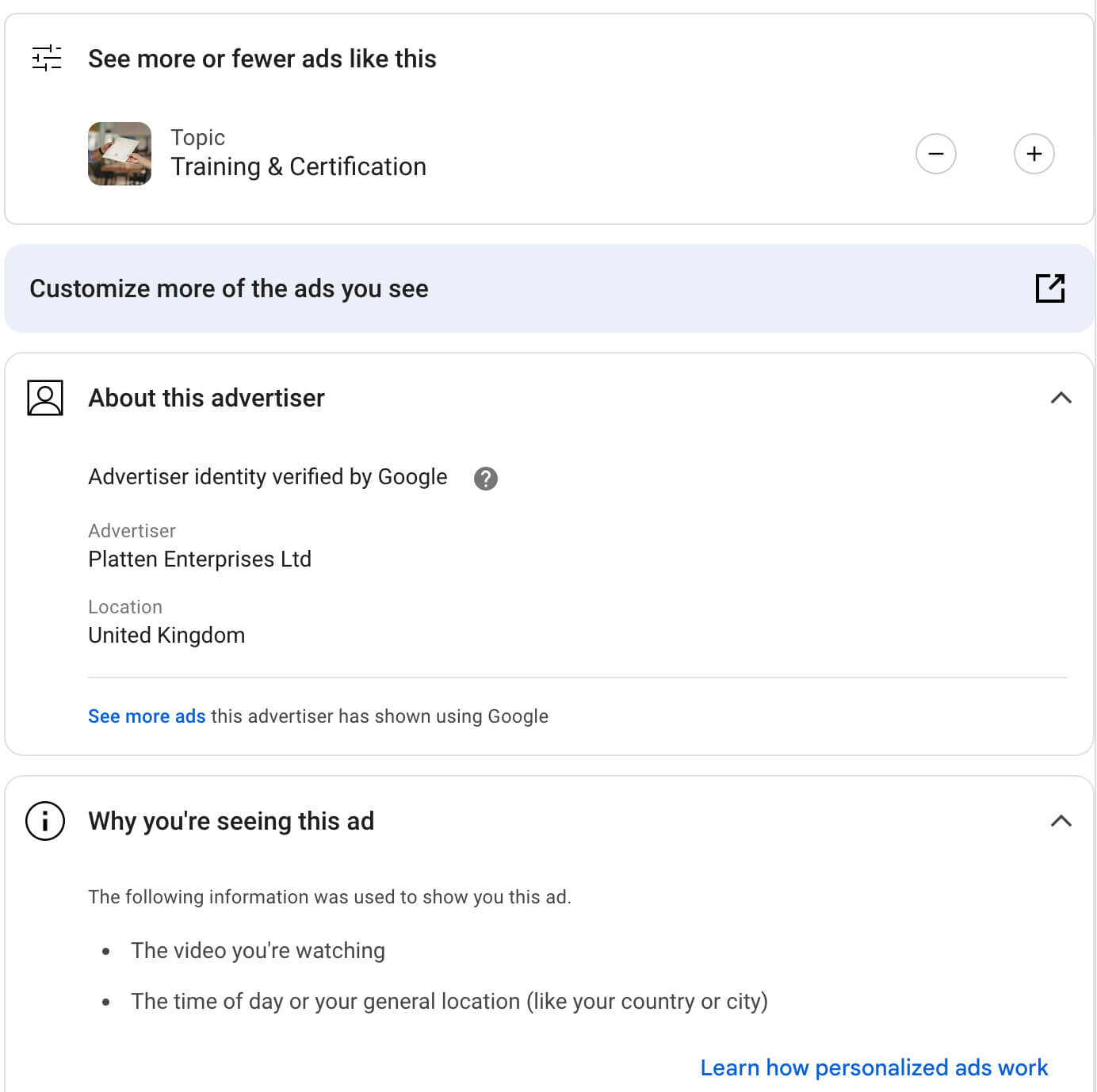
If you’re running sales or lead generation ads, then it’s particularly important to know whether you’re targeting current customers or new clients. For example, the advertiser below is targeting new customers. If you haven’t tried adjusting your bidding based on new versus returning customers, you may get value from doing so.
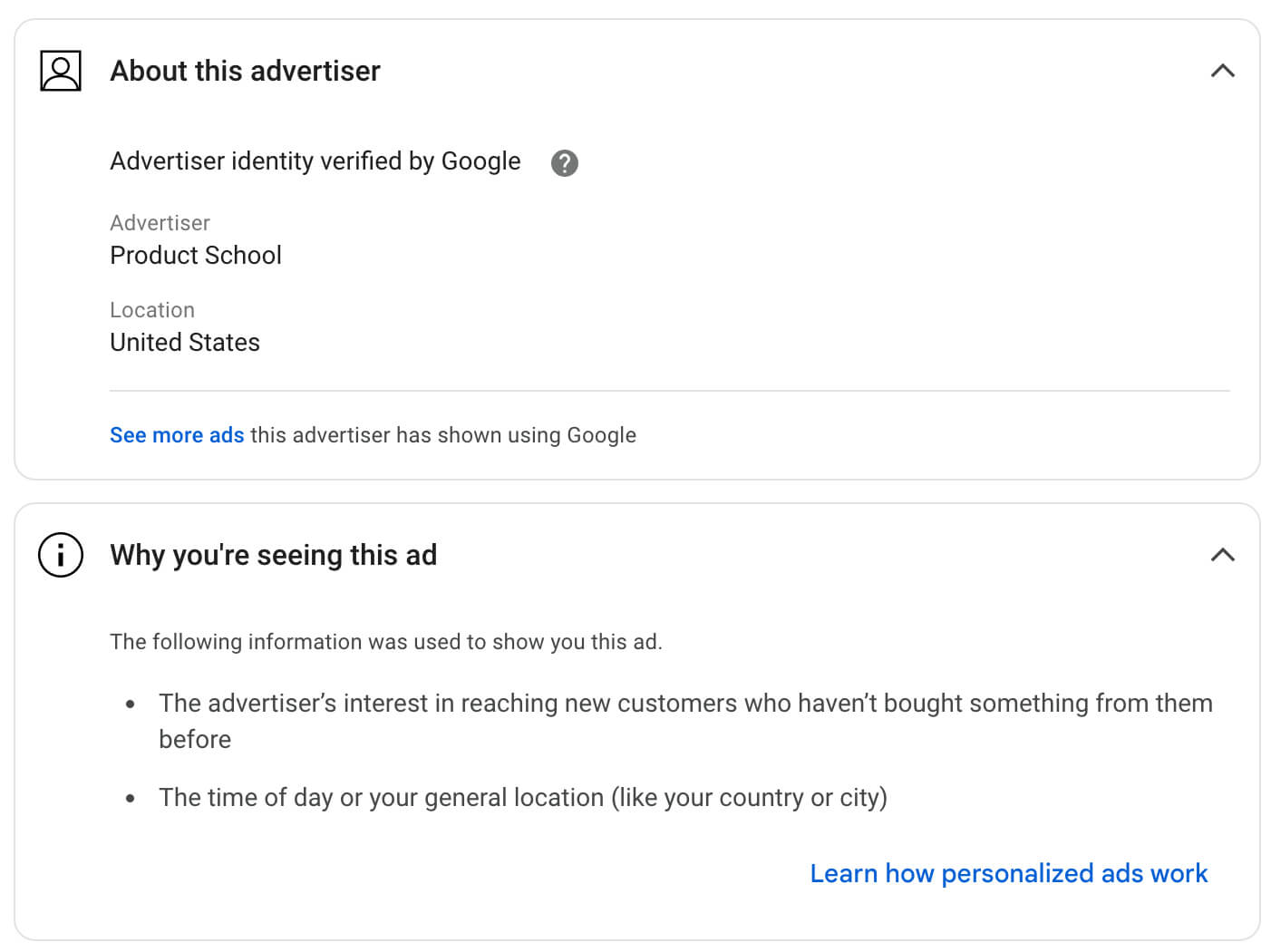
Evaluate Gmail and Google Search Ads
Keep in mind that if your team runs YouTube campaigns, then the video platform is just one of the Google properties where your ads might appear. For example, if you’re running Discovery or Performance Max campaigns, then your ads may also appear in Gmail inboxes or on Google search results pages.
That means you can also use these properties to do competitive research. For example, you can click to see more about any ad that appears in your Gmail inbox (below). You can also use Google search to research keywords and related terms that you intend to target in your own campaigns or that you think your competitors might target.

The only downside of this strategy is that although the interface identifies the advertiser, it doesn’t always let you click through to view more paid content from the same advertiser. If the advertiser is verified, you can click See More Ads to view more of the advertiser’s paid content in the Google Ads Transparency Center.
But if the advertiser isn’t verified, you can’t click through to see more of their ads. Since the Google Ads Transparency Center only displays verified advertisers, you can’t search for them here either.
#3: Use Competitive Research to Guide Your YouTube Ad Campaigns
Now you have a sense of the data you can glean from the Google Ads Transparency Center. So how can you use this competitive research to inform or improve your own Google Ads campaigns? Let’s look at a few tactics.
Rethink Your YouTube Keyword List
Did your competitive research turn up some interesting keyword ideas? You can manually add these keywords to your next video ad group. But keep in mind that choosing just one or two keywords can seriously compromise ad delivery.
If you need more keyword ideas, enter your landing page URL or your main keyword and wait for Google Ads to suggest related ideas. From there, you can review and add the most relevant keywords to the ad group or you can click to add them all instantly.
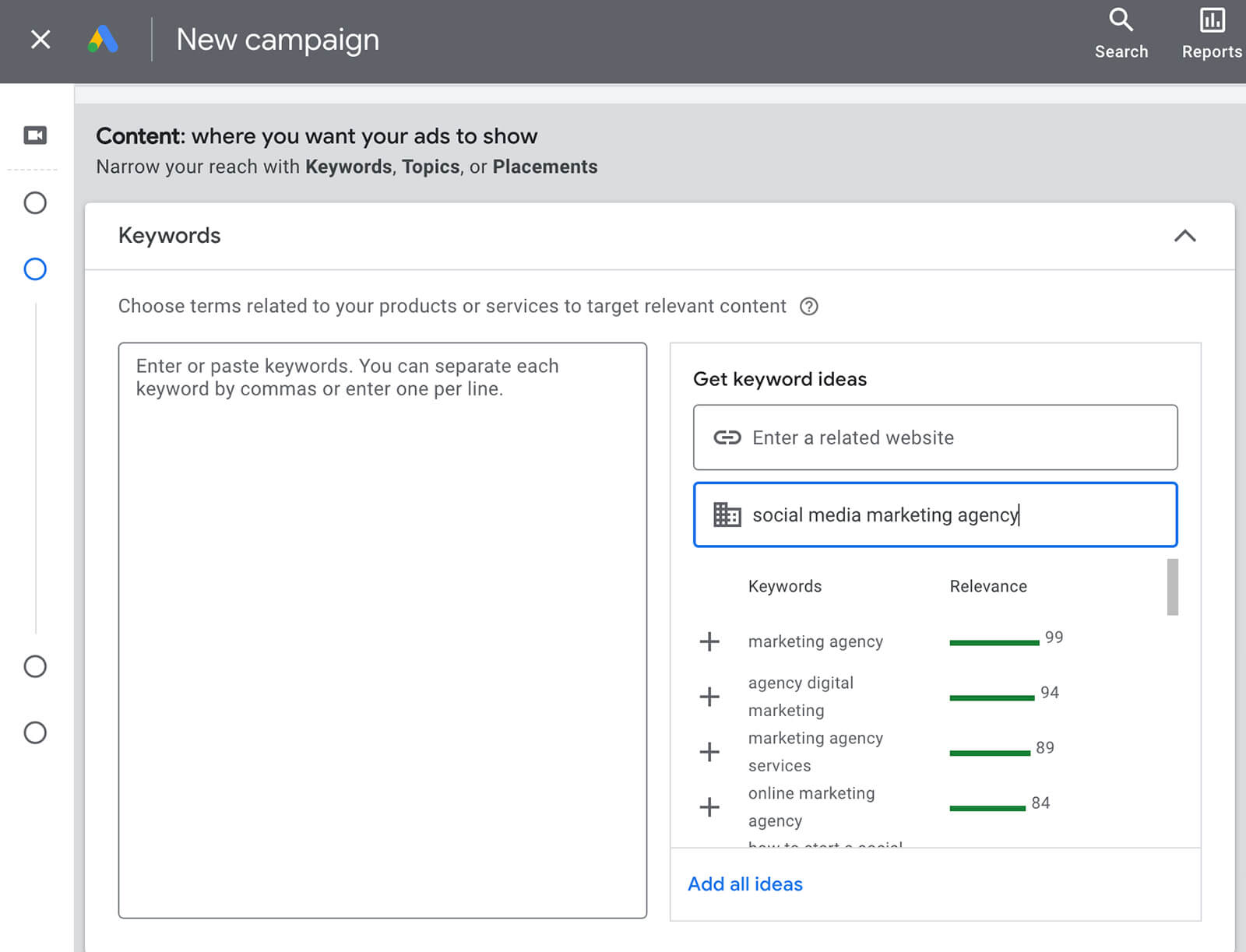
Note that Google Ads advises against using multiple types of content targeting for a single ad group. If you opt to test keyword targeting, make sure you aren’t also targeting topics or placements.
Update Your Video or Channel Targeting
If you want to reach a relatively broad audience on YouTube, then topic targeting may be your best bet. With topics, you can place your video ads on or alongside content related to those subjects. For example, if you want to target marketing and advertising topics, you can stick with that broad subject or narrow it down to social media marketing.
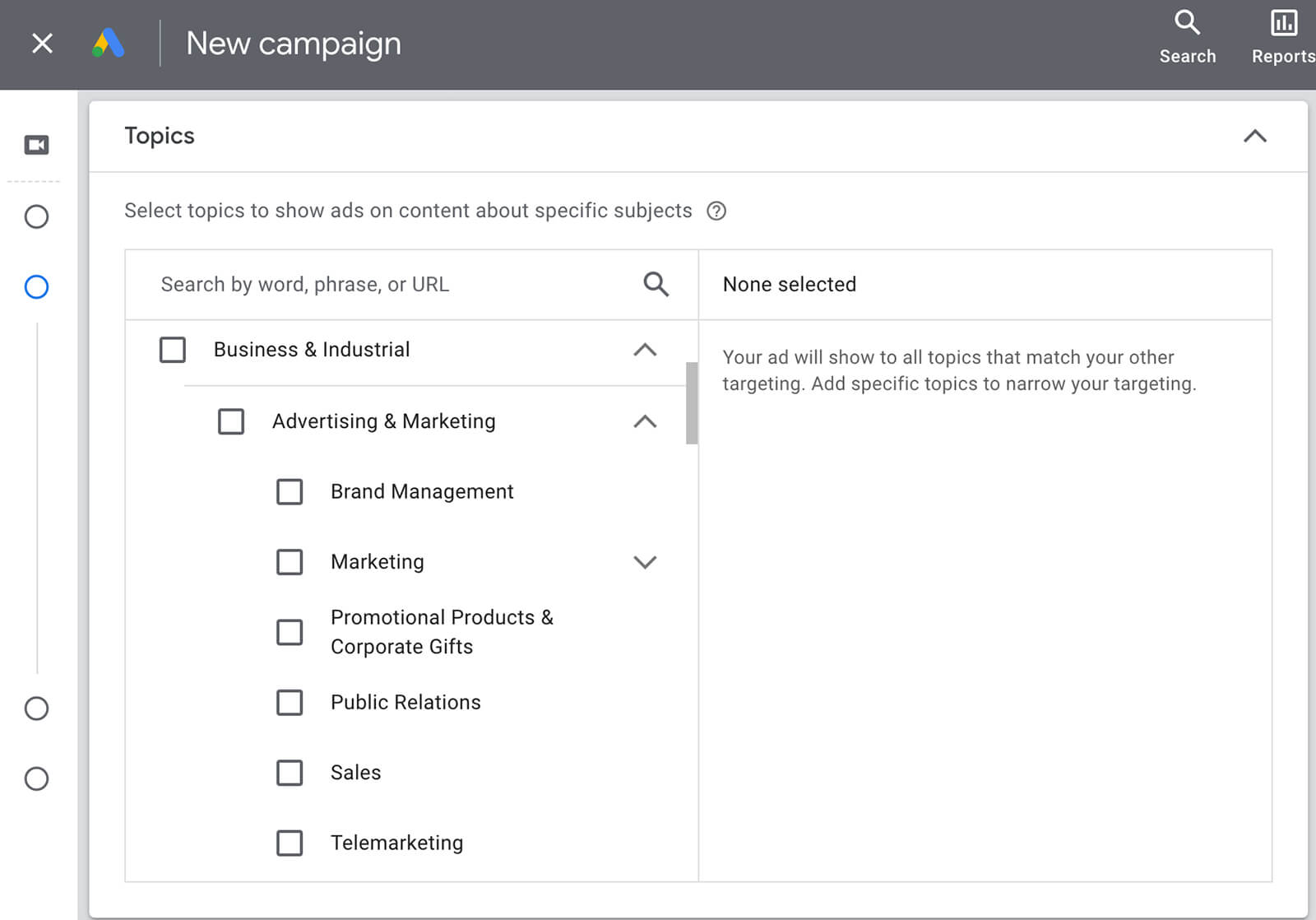
But if you’ve found that your competitors are targeting videos and channels, this approach may be worth testing. With Google Ads’ placement targeting, you can place video ads on any video or channel that’s relevant to your audience or offer.
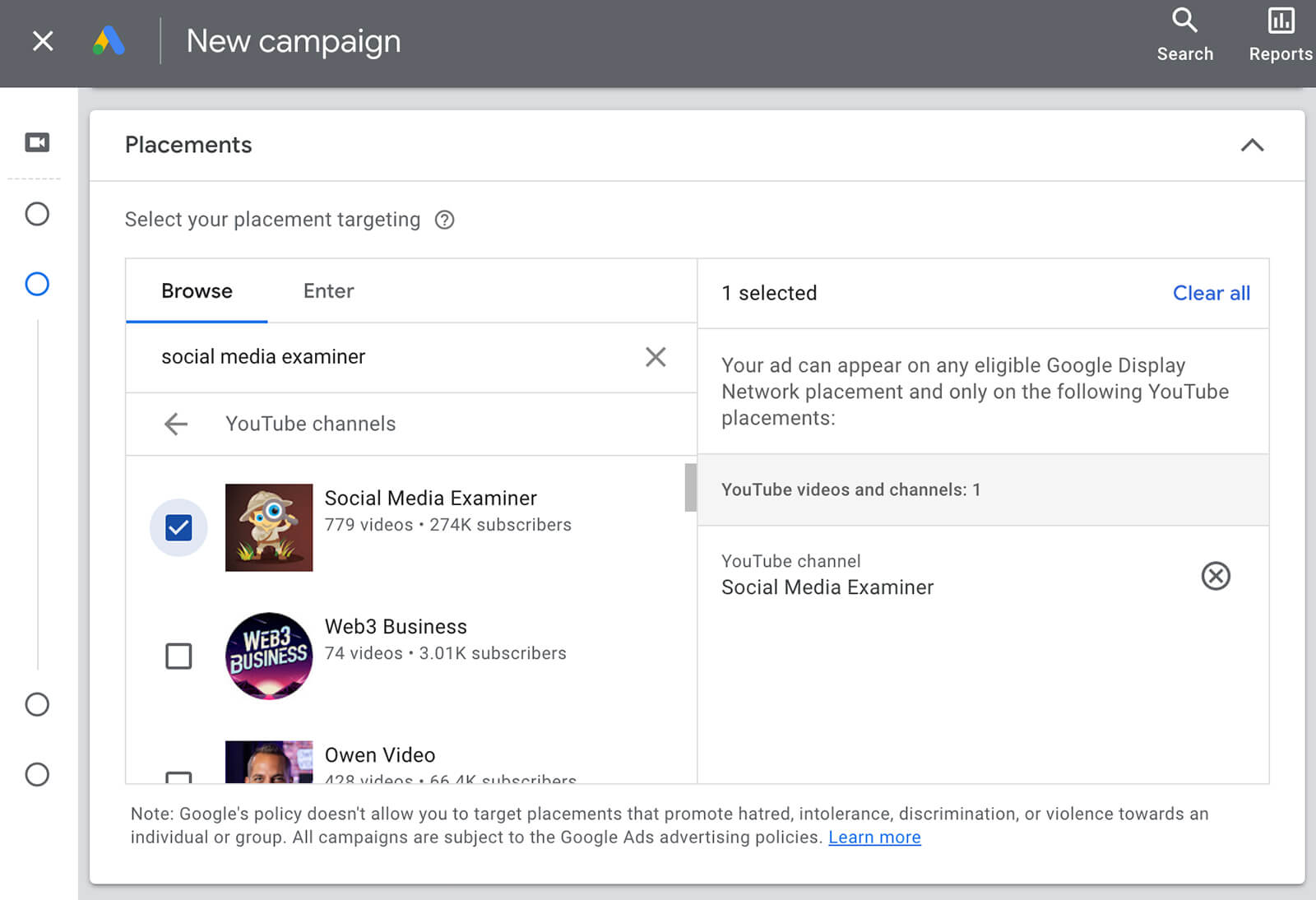
Keep in mind that selecting a single video or channel can allow for highly specific targeting but this approach can also limit ad delivery. Monitor your results closely for ad delivery issues, and if necessary, adjust the placements to expand your targeting.
Test New Ad Creatives or Formats
Are your competitors using video designs or formats that you haven’t tested yet? Work with your creative team to test these ideas or use Google Ads’ built-in video ad templates to get started on a small budget.
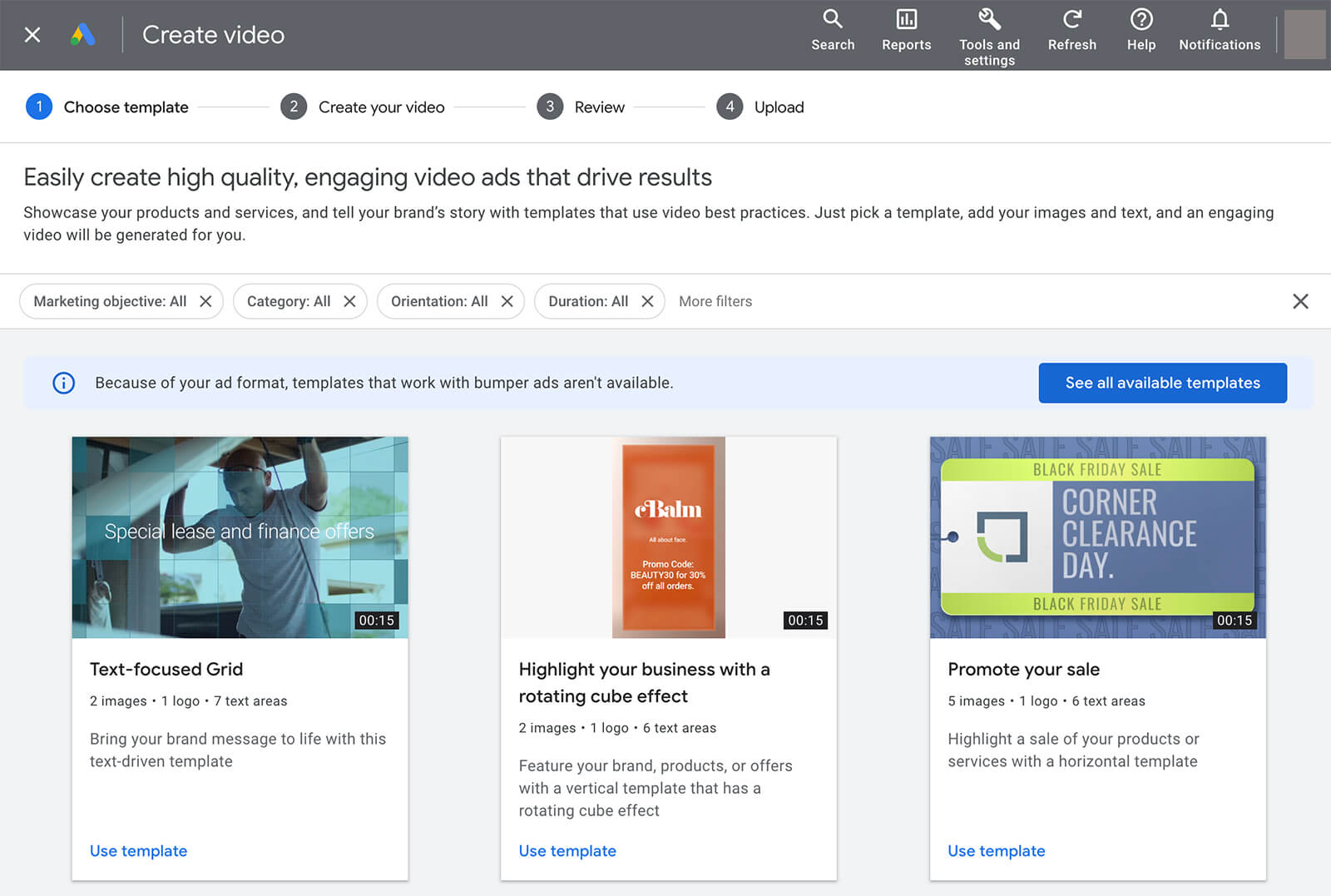
To confirm whether the new formats or styles work for your audience, use Google Ads’ Experiments tool. It lets you compare up to four different campaigns and get definitive data on the creatives that drive the best outcomes. Then you can use these insights to guide your creative strategy and ensure that your videos continue to connect with your audience.
Conclusion
The Google Ads Transparency Center makes it much easier for YouTube advertisers to do competitive research. Whether you’re planning your next video ad campaign or you’re planning to advertise across Google properties, this platform can help you analyze competitor targeting and evaluate competitor ads so you can run smarter ad campaigns.
Stay Up-to-Date: Get New Marketing Articles Delivered to You!
Don't miss out on upcoming social media marketing insights and strategies! Sign up to receive notifications when we publish new articles on Social Media Examiner. Our expertly crafted content will help you stay ahead of the curve and drive results for your business. Click the link below to sign up now and receive our annual report!
Attention Agency Owners, Brand Marketers, and Consultants

Introducing the Marketing Agency Show–our newest podcast designed to explore the struggles of agency marketers.
Join show host and agency owner, Brooke Sellas, as she interviews agency marketers and digs deep into their biggest challenges. Explore topics like navigating rough economic times, leveraging AI, service diversification, client acquisition, and much more.
Just pull up your favorite podcast app, search for Marketing Agency Show and start listening. Or click the button below for more information.

